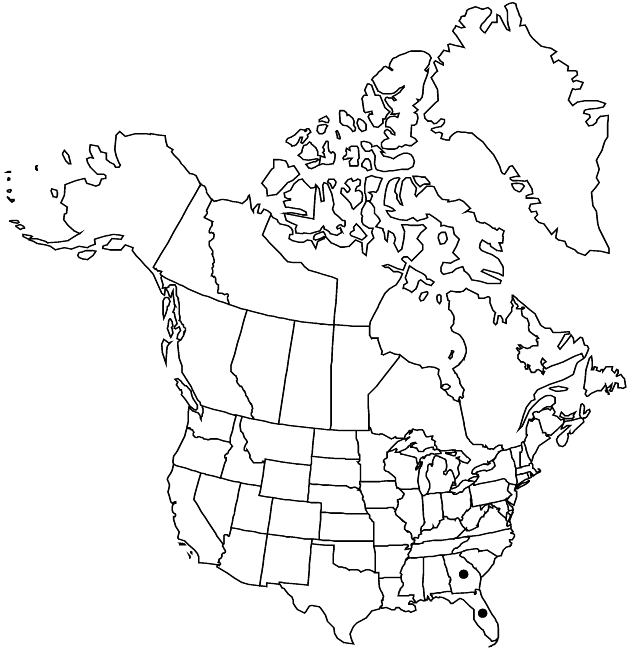Rudbeckia mohrii
Proc. Amer. Acad. Arts 17: 217. 1882.
Perennials, to 110 cm (rhizomatous, roots fibrous). Leaves green (glaucous), blades (3–5-nerved) narrowly lanceolate to linear (not lobed), leathery, bases attenuate, margins entire (sometimes ciliate), apices acute, faces glabrous; basal petiolate, 10–40 × 0.5–1.5 cm; cauline petiolate or sessile, 2–25 × 0.2–0.8 cm. Heads (3–15) in ± corymbiform arrays. Phyllaries to 1 cm. Receptacles ovoid or ellipsoid to hemispheric; paleae 4–5 mm, glabrous or sparsely hairy, apices obtuse, acuminate. Ray florets 7–14; laminae elliptic to oblanceolate, 12–30 × 5–10 mm, abaxially glabrous. Discs 9–15 × 7–17 mm. Disc florets 100–200+; corollas yellowish green proximally, maroon distally, 3–4 mm; style branches ca. 1 mm, apices acute to blunt. Cypselae 3.4–4.2 mm; pappi ± coroniform, of connate or distinct scales to 1.2 mm. 2n = 36.
Phenology: Flowering summer–fall.
Habitat: Wet pine savannas, along ditches and bayous, shallow water
Elevation: 0–50 m
Discussion
Selected References
None.
